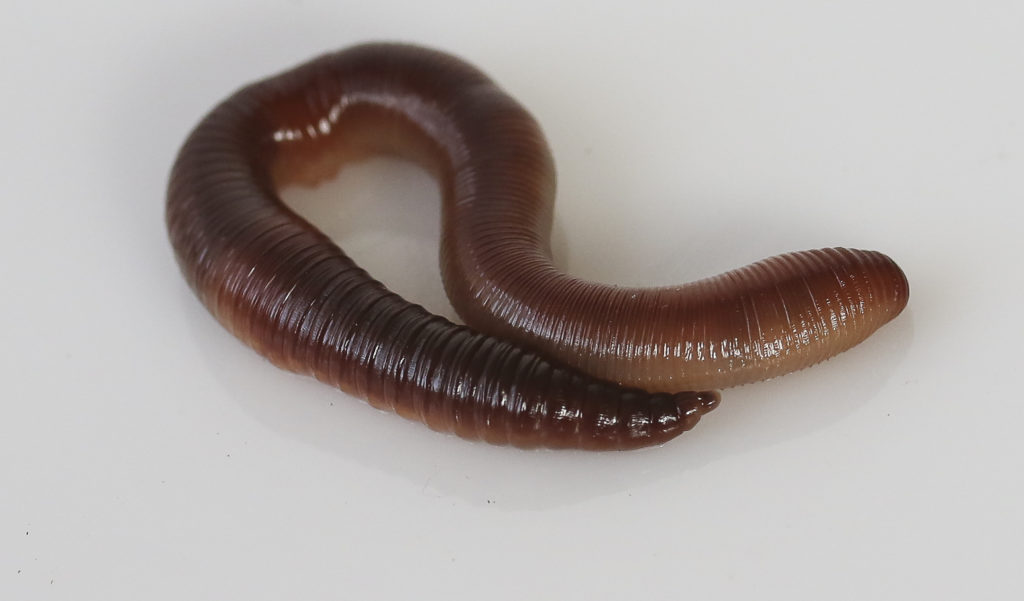Creature Feature

Be On the Lookout for Jumping Worms
By Wayne Bierbaum
Maryland’s Biodiversity Project lists 39 species of earthworms living around the state. The two species that most people think of as being common and beneficial are the red earthworm (Lumbricus rebellus) and the common earthworm (Lumbricus terrestris). They push through the earth eating decaying plant matter, softening the soil, and improving the water flow and aeration for plants.
However, unfortunately, not all earthworms are helpful. There are now three non-native earthworms that are actually harmful to the soil. These earthworms arrived in the United States with plants from Asia many years ago. The first invader was found in 1939 in Baltimore. They are now widespread and out-compete the native worms.
These invasive earthworms are collectively called jumping worms and are in the genus Amythas. They grow very fast and very large, up to 6 inches. Because they are surface feeders, they damage the soil instead of aerating it. The deeper soil dries and hardens, which increases erosion.
There are three ways to identify these invasive jumping worms. The most obvious is the way they violently flop around when they are exposed. They literally will throw themselves into the air to escape a predator. The second identifier is that the part of the worm that forms an egg case, the clitellum, is very pale compared to the darker body. The clitellum is close to its mouth end, about 1/8th back. The third way to tell if it’s a jumping worm is the way they litter the ground surface with granular castings of digested soil that resembles coffee grounds.
To test your garden or yard for the worms try this mustard test from the University of Maryland Extension. Mix ⅓ cup of ground hot yellow mustard seed (look for Chinese or Asian hot mustard) into 1 gallon of water and pour half of the liquid slowly over 1 square foot of soil. Wait a few minutes and then pour the rest. This will make any earthworms come to the surface. Identify, collect, and discard the jumping worms, if present. The mustard solution will not harm plants or kill the worms.
Like all earthworms, jumping worms are hermaphroditic and do not need a second worm to reproduce. They can use both sexual and non-sexual reproduction. The worms typically will have two reproductive cycles a year with the second occurring in the fall when the worm dies leaving an egg case to over-winter. (Whereas, many native species survive the winter by digging deeply into the soil.)
Unfortunately, jumping worms are very difficult to remove. They grow quickly and produce lots of eggs. It may be better to just try to control their spread. When purchasing natural mulch or soil, cover the product with black fabric or plastic and leave it in the sun for five days to heat any worms and eggs above their 104-degree toleration.
We are approaching fishing season in Maryland. Using earthworms for fishing has led to the introduction of these non-native worms to the northern forests of the U.S. and has caused severe damage to some large tracts of hardwood forests. Catching invasive jumping worms to use for bait is all right, but they should not survive the trip. Do not release unused worms.
